 BMW R 1250 RT - Owner's Manual > Brakes
BMW R 1250 RT - Owner's Manual > Brakes
How can stopping distance be minimised? Each time the brakes are applied, a load distribution shift takes place with the load shifting forward from the rear to the front wheel. The sharper the motorcycle decelerates, the more load is shifted to the front wheel. The higher the wheel load, the more braking force can be transmitted without the wheel locking.
To optimise stopping distance, apply the front brakes rapidly and keep on increasing the force you apply to the brake lever. This makes the best possible use of the dynamic increase in load at the front wheel. Remember to pull the clutch at the same time.
In the extreme braking situations that are trained so frequently, braking force is applied as rapidly as possible and with the rider's full force applied to the brake levers; under these circumstances, the dynamic shift in load distribution cannot keep pace with the increase in deceleration and the tyres cannot transmit the full braking force to the surface of the road.
BMW Motorrad Integral ABS prevents the front wheel from locking up.
Hazard braking
If you brake sharply from a speed in excess of 50 km⁄h, the brake light flashes rapidly as an additional warning for road users behind you.
The hazard warning lights system switches on if you brake to below 15 km⁄h in this process.
The hazard warning lights system automatically switches off from a speed of 20 km⁄h.
Descending mountain passes
WARNING Braking only with the rear brake on mountain descents
Brake fade, destruction of the brakes due to overheating
- Use both front and rear brakes, and make use of the engine's braking effect as well.
Wet and dirty brakes
Wetness and dirt on the brake discs and the brake pads diminish braking efficiency.
Delayed braking action or poor braking efficiency must be reckoned with in the following situations:
- Riding in the rain or through puddles of water.
- After the vehicle has been washed.
- Riding on salted or gritted roads.
- After work has been carried on the brakes, due to traces of oil or grease.
- Riding on dirt-covered surfaces or off-road.
WARNING Wetness and dirt result in diminished braking efficiency
Risk of accident
- Apply the brakes lightly while riding to remove wetness and dirt, or dismount and clean the brakes.
- Think ahead and brake in good time until full braking efficiency is restored.
ABS Pro
Physical limits applicable to motorcycling
WARNING Braking when cornering
Risk of crash despite ABS Pro
- Invariably, it remains the rider's responsibility to adapt riding style to riding conditions.
- Do not take risks that would negate the additional safety offered by this system.
ABS Pro is available in all riding modes.
- with riding modes Pro OE
The Dynamic Brake Control supporting function is also available.
Possibility of a fall not precluded
Although ABS Pro provides the rider with valuable assistance and constitutes a huge advance in safety for braking with the motorcycle banked for cornering, it cannot under any circumstances be considered as redefining the physical limits that apply to motorcycling.
It is still possible for these limits to be overshot due to misjudgement or rider error. In extreme cases this can result in a crash.
Use on public roads
ABS Pro helps make the motorcycle even safer for riding on public roads. When the brakes are applied because of an unforeseen hazard when the motorcycle is banked for cornering, within the physical limits that apply to motorcycling the system prevents the wheels from locking and skidding away.
NOTICE ABS Pro was not developed to enhance individual braking performance with the motorcycle banked into corners.
- with riding modes Pro OE
During emergency braking, Dynamic Brake Control increases the braking effect and intervenes if the throttle grip is accidentally actuated during the braking process.
Parking your motorcycle
Side stand
- Switch off the engine.
ATTENTION Poor ground underneath the stand
Risk of damage to parts if vehicle topples
- Always check that the ground under the stand is level and firm.
ATTENTION Additional weight placing strain on the side stand
Risk of damage to parts if vehicle topples
- Do not sit or lean on the vehicle while it is propped on the side stand.
- Extend the side stand and prop the motorcycle on the stand.
- Turn the handlebars all the way to left.
- On a gradient, the motorcycle should always face uphill; select 1st gear.
Centre stand
- Switch off the engine.
ATTENTION Poor ground underneath the stand
Risk of damage to parts if vehicle topples
- Always check that the ground under the stand is level and firm.
ATTENTION Centre stand folds in due to sharp movements
Risk of damage to parts if vehicle topples
- Do not lean or sit on the vehicle with the centre stand extended.
- Extend the centre stand and lift the motorcycle onto the stand.
- On a gradient, the motorcycle should always face uphill; select 1st gear.
See also:
 BMW R 1250 RT - Owner's Manual > Starting
BMW R 1250 RT - Owner's Manual > Starting
Start engine Switch on the ignition. Pre-Ride-Check is performed. ABS self-diagnosis is in progress. ASC self-diagnosis is performed. Select neutral or, if a gear is engaged, pull the clutch lever.
 BMW R 1250 RT - Owner's Manual > Refuelling
BMW R 1250 RT - Owner's Manual > Refuelling
Fuel grade Requirement To ensure optimal fuel consumption, fuel should be sulphur-free or as low-sulphur as possible. ATTENTION Engine operation with leaded fuel
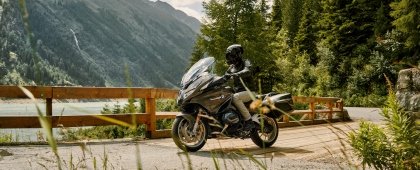 BMW R 1250 RT
BMW R 1250 RT Kymco Agility 50
Kymco Agility 50 Piaggio Liberty 50
Piaggio Liberty 50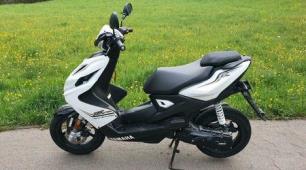 Yamaha aerox NS50
Yamaha aerox NS50 Aprilia SR50R
Aprilia SR50R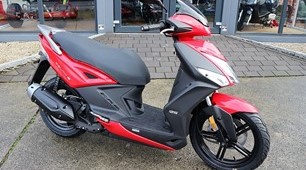 Kymco Agility 50
Kymco Agility 50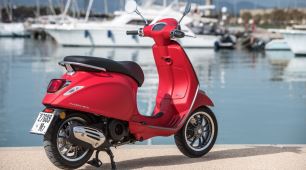 Vespa Primavera 50
Vespa Primavera 50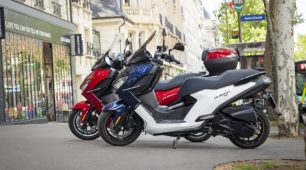 Peugeot Speedfight
Peugeot Speedfight